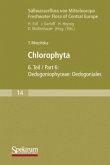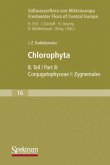This volume is a compilation of Dinophyceae which are of interest to phycologists and protozoologists. Since it is very difficult to classify of the unicellular organisms as plants or animals two approaches can be found to the classification of dinoflagellates - the botanical and zoological. We have employed the phycological (botanical) approach in our textbook. However, we view the dinoflagellates as protists which exhibit both plant and animal features.
Classically phycologists divided dinoflagellates into monads, rhizopods, coccals, capsals and trichals based on morphology. During our studies of freshwater dinoflagellates we have observed and recorded stages transcendent among these forms. We have also lumped many poorly described species. We have listed in the appendix all the freshwater species known. Thus we face a dilemma wether to compile dinoflagellates according to classical systematics or to use the classical approach inserting new information. We have chosen the latter.
Classically phycologists divided dinoflagellates into monads, rhizopods, coccals, capsals and trichals based on morphology. During our studies of freshwater dinoflagellates we have observed and recorded stages transcendent among these forms. We have also lumped many poorly described species. We have listed in the appendix all the freshwater species known. Thus we face a dilemma wether to compile dinoflagellates according to classical systematics or to use the classical approach inserting new information. We have chosen the latter.








